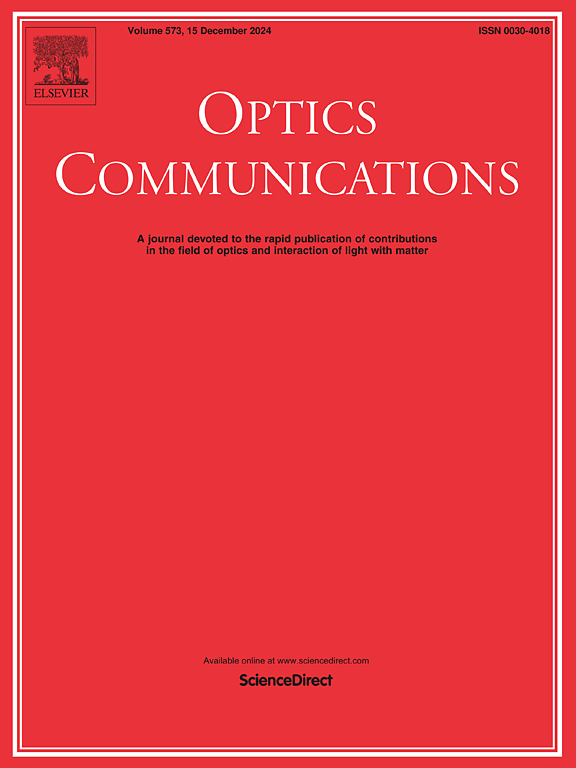A low heat release cladding pump coupler
IF 2.2
3区 物理与天体物理
Q2 OPTICS
引用次数: 0
Abstract
Few-mode erbium-doped fiber amplifiers (FM-EDFAs) have opened up the possibility of realizing the next generation of high-capacity, high-rate communication systems. However, the leakage of pump light during continuous operation of the FM-EDFA is likely to cause the temperature of the cladding pump coupler to be too high and thus destabilize the amplifier. In this work, a low heat release cladding pump coupler was designed and the corresponding FM-EDFA was constructed. The cladding pump coupler in the 8 h of continuous operation of the FM-EDFA is at 27.8 °C for maximum, 23.7 °C for minimum, and 26 °C for average temperatures, respectively, which are in a low-temperature safe transmission state. The FM-EDFA performance test was performed on this basis, and the results show that when the input pump power is 7 W, the maximum gain fluctuation of each mode of FM-EDFA at 1550 nm in 0∼8 h is only 1.5 dB, the gain of all modes is greater than 23 dB and the differential mode gain (DMG) is less than 2 dB. In addition, the FM-EDFA still has good performance in the C-band after 8 h of continuous operation. The gain for all modes is greater than 21 dB, DMG is less than 2 dB, and wavelength flatness is 3.6 dB. The low heat release cladding pump coupler is conducive to the stable amplification transmission of FM-EDFA, which is of great significance to achieving the upgrading and expansion of the communication system.
低热释放覆层泵耦合器
少模掺铒光纤放大器(FM-EDFA)为实现下一代大容量、高速率通信系统提供了可能。然而,在 FM-EDFA 连续工作期间,泵浦光的泄漏很可能导致包层泵浦耦合器温度过高,从而破坏放大器的稳定性。在这项工作中,设计了一种低热释放包层泵浦耦合器,并构建了相应的调频-EDFA。在 FM-EDFA 连续工作 8 h 的情况下,包层泵耦合器的最高温度、最低温度和平均温度分别为 27.8 ℃、23.7 ℃ 和 26 ℃,处于低温安全传输状态。在此基础上进行了 FM-EDFA 性能测试,结果表明,当输入泵功率为 7 W 时,FM-EDFA 在 1550 nm 波长的各模式增益在 0∼8 h 内的最大波动仅为 1.5 dB,所有模式的增益均大于 23 dB,差模增益(DMG)小于 2 dB。此外,FM-EDFA 在 C 波段连续工作 8 h 后仍具有良好的性能。所有模式的增益均大于 21 dB,DMG 小于 2 dB,波长平坦度为 3.6 dB。低放热包层泵浦耦合器有利于调频-EDFA的稳定放大传输,对实现通信系统的升级和扩展具有重要意义。
本文章由计算机程序翻译,如有差异,请以英文原文为准。
求助全文
约1分钟内获得全文
求助全文
来源期刊

Optics Communications
物理-光学
CiteScore
5.10
自引率
8.30%
发文量
681
审稿时长
38 days
期刊介绍:
Optics Communications invites original and timely contributions containing new results in various fields of optics and photonics. The journal considers theoretical and experimental research in areas ranging from the fundamental properties of light to technological applications. Topics covered include classical and quantum optics, optical physics and light-matter interactions, lasers, imaging, guided-wave optics and optical information processing. Manuscripts should offer clear evidence of novelty and significance. Papers concentrating on mathematical and computational issues, with limited connection to optics, are not suitable for publication in the Journal. Similarly, small technical advances, or papers concerned only with engineering applications or issues of materials science fall outside the journal scope.
 求助内容:
求助内容: 应助结果提醒方式:
应助结果提醒方式:


